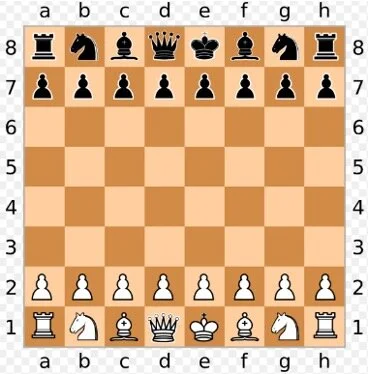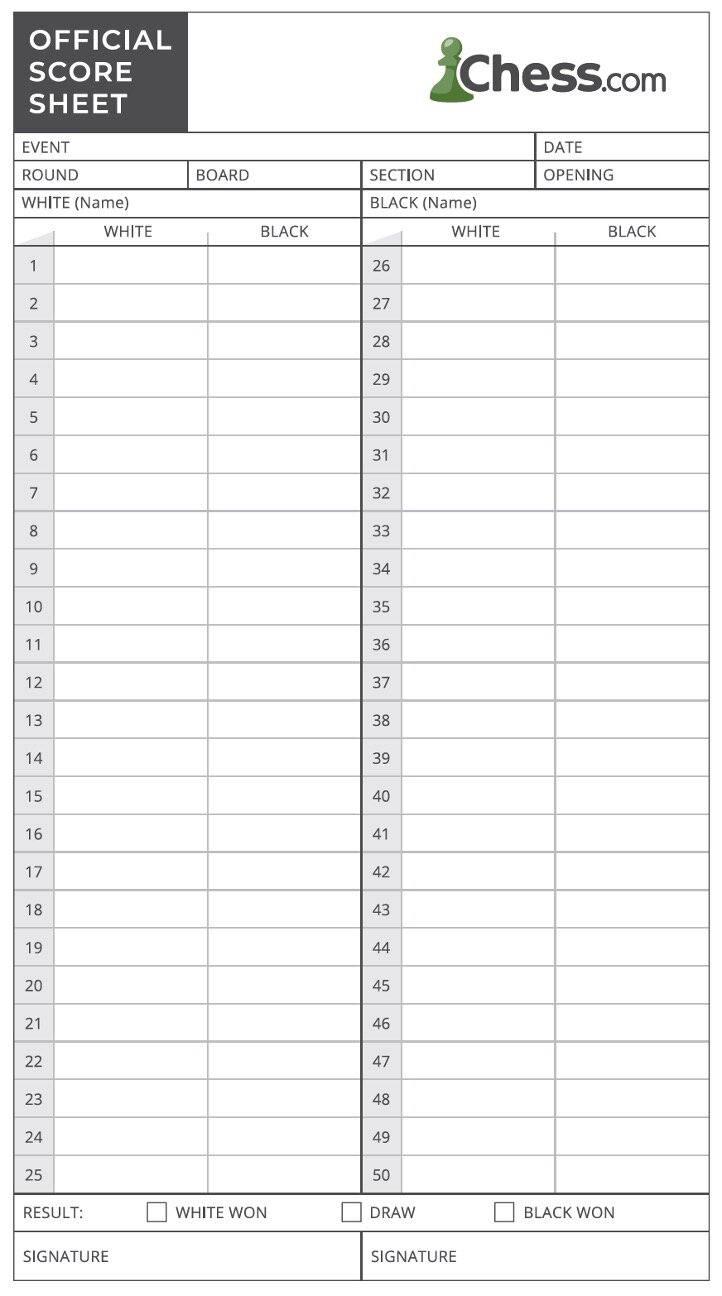E
very square on the chessboard has a name.
A row of squares is called a RANK. There are eight ranks: 1st through 8th.
White's pieces always start on the 1st and 2nd ranks
Black's pieces always start on the 7th and 8th ranks.
A column of squares is called a FILE. There are eight files: "a" through "h".
The kings always start on the e-file, and the queens always start on the d-file.
A diagonal line of squares is called a DIAGONAL.
Important Information!
Piece Value
Each piece has a value. It is a general rule of thumb to know the relative values of each piece. When you exchange (or trade) pieces, you can make sure you are getting a good deal!
Pawn = 1 point
Knight = 3 points
Bishop = 3 points
Rook = 5 points
Queen = 9 points
King = infinite (if you lose it you lose the game!)
Chess notation
Algebraic notation is a method to record and describe moves in chess. It uses coordinates to uniquely identify each square on the chessboard. It can be very useful to allow you to review a game you played!
King = K
Queen = Q
Rook = R
Bishop = B
Knight = N
Pawn - no symbol
+ = Check
++ = Double Check (sometimes this is also used as checkmate)
# = Checkmate
0-0 = Castle Kingside
0-0-0 = Castle Queenside
x = capture
e.p. = en passant
Scoresheet
Score sheets are important because they are the official record of a chess game and its outcome. It often includes the player’s names, the dates, event name, the moves, and other description.
More details in the section below!

Values of each piece

e4 or Pawn to e4

Nf3 or Knight to f3

BxNe4 or Bishop takes Knight on e4
Advanced Annotation - Scoresheet!
When playing competitive matches, you will see both players complete a chess scoresheet.
Score sheets are important because they are the official record of a chess game and its outcome. It often includes the player’s names, the dates, event name, the moves, and other description.
When a game ends, both players sign each other's score sheet—demonstrating that they agree with the moves recorded.
You can also analyze your games after using the scoresheet!
An example blank scoresheet from chess.com (left). You can download your own blank scoresheet from their website.
An example of what it looks like when the moves are filled out!





